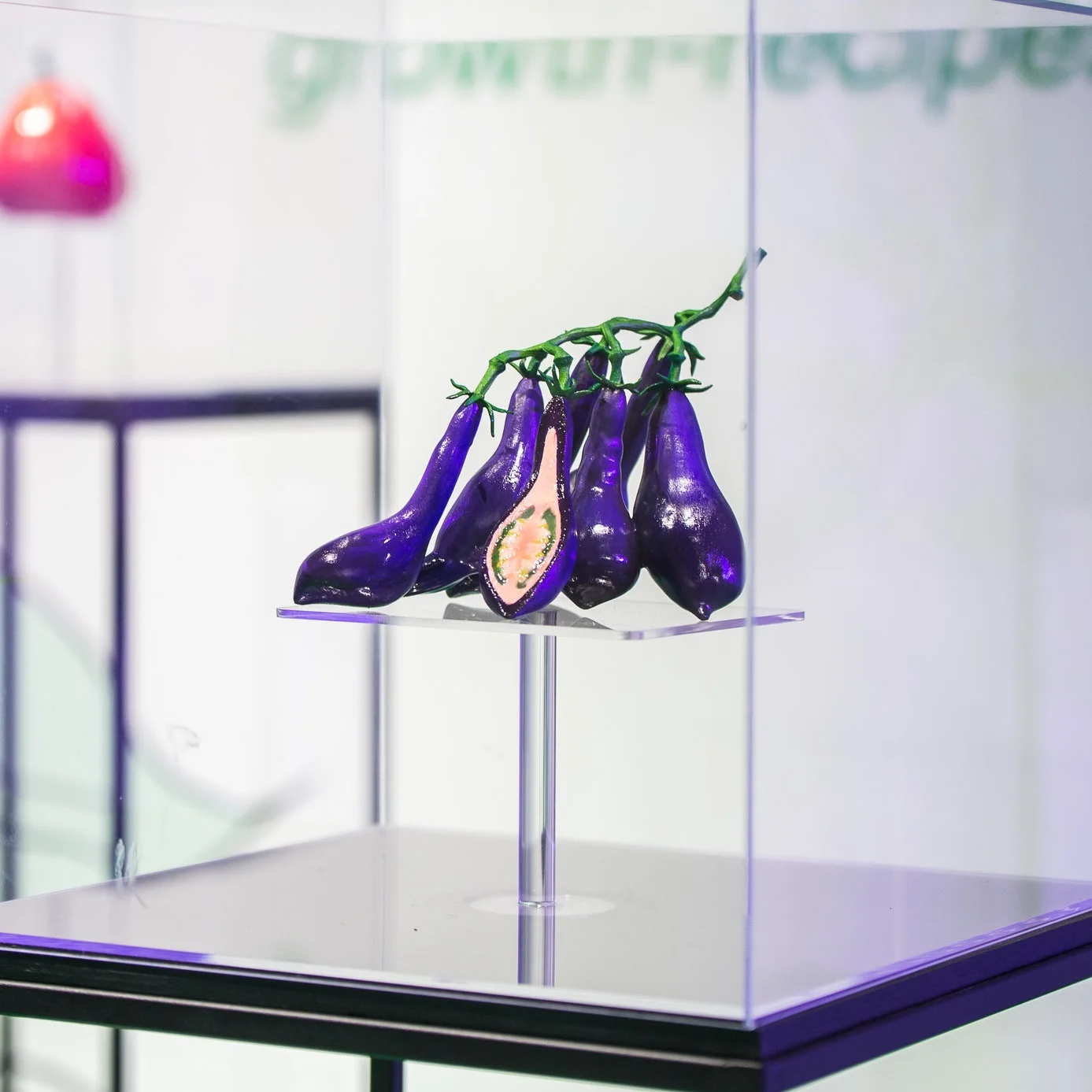Future Food Formula
Design your own future tomato with the use of growth recipes
Year of project: 2017 - 2019
In collaboration with: Next Nature Network, Organism Studios, Utrecht University
Photos © Maarten Nauw
the ‘Vitamin Stick’
the ‘Water Bomb’
the ‘Mutated Weirdo’
FUTURE FOOD FORMULA
The Future Food Formula is an interactive installation that allows consumers to step into the shoes of a high-tech farmer and design their personalized future vegetable without the use of GMOs but by making smart use of technology to influence natural growing conditions. Adjust the recipe on the touchscreen to see how your input effects the size, color, taste and nutritional value of the crop
“Design your own vegetable by adjusting the growth recipe.”
“The visitor learns about indoor farming technology and plant physiology while designing their personalized future crop. ”
WHAT ARE GROWTH RECIPES?
It may seem logical to us that a tomato grown in Spain is redder, juicier, and richer in taste than it would be were it grown in the Netherlands; Spain has a warmer climate, and the crops get more hours of sunlight. But these are just a few of the factors that influence the growing process. It’s not only the amount of light and water that impacts the development of a crop; factors such as humidity, airflow, light spectrum, CO2 concentration and the pH value of the soil are equally important. In fact, the adjustment of one growing factor can already influence the shape, size, color, smell, taste, texture and nutritional value of a crop.
Inside high-tech growth facilities, each of these environmental factors can be simulated and determined separately. The values are written down in so-called “growth recipes.” Because tomato plants react differently to certain environmental factors than lettuce, scientists create a specific recipe for each crop. This way, the farmer can decide either to grow the crop in its regular growth cycle, or to optimize the growing conditions in order to increase the quality of the crop or incite higher yields.
FROM IMAGINATION TO REALITY
So today, scientists are experimenting with this technology, but mainly for efficiency purposes. What if we explored the limits of this technology and experimented with the use of growth recipes for purposes other than efficiency?
Already when adapting a recipe to our own liking, we adjust the taste, smell, color and nutritional value of a dish. But what if technology could allow us to do the same thing directly to our crops? This would mean that in the future, we could “cook” with growth recipes instead of with ingredients. We simply compile a growth recipe that contains our preferences before the seed even grows; this will bring forth a new generation of crops through experimental growth recipes.
The custom growth-recipes turn your vegetable fantasies into a reality. Make it purple or orange? Mild or extra spicy? Very light or super dense? With increased vitamine C? Perfectly ripe just in time for Friday night dinner.
Moving forward to an era in which we will be cooking with growth-recipes instead of ingredients!
“Can we create new generations of crops through experimental growth recipes?”
Preview of the Future Food Formula growth recipe generator:
DECENTRALIZED PLANT BREEDING
Now it’s up to the scientists to experiment with the growth recipes and see whether it’s possible to grow different phenotypes, flavors and nutritional values from just one seed, based on the applied growing conditions. If this works, we can all welcome a climate-controlled cultivation system into our kitchen and start experimenting for ourselves.
This may lead to a future of decentralized plant breeding. We may be able to design and grow new generations of crops from our homes, and upload (or download) the growth recipes onto a digital server, from which—based on the amount of “likes” or “shares” each recipe receives—producers can pick out which crops they want to mass-produce.
“What if one tomato seed holds the genetic information from all varieties? Creating your desired tomato depending on the growth recipe you apply... ”
Whimsical seed
All cabbages—think cauliflower, Brussels sprouts, kale and broccoli—
are “spontaneous” mutations originating from the same cabbage-like ancestor. What if one seed held all the genetic information to grow all family members, depending on what growth recipe you apply?
Geometry seed
Grow functional vegetables to reduce food waste and increase efficiency. Meet the “sandwich tomatoes” and “cylindrical eggplants.”






